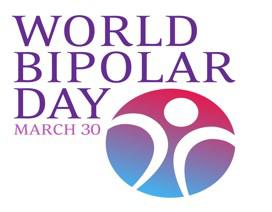A research group at the University of Worcester is celebrating an important milestone in its research into the causes of bipolar disorder today on World Bipolar Day.

Held annually on 30th March, the birthday of Vincent Van Gogh, who is famously believed to have had bipolar disorder, the day aims to raise awareness of the condition.
The group is celebrating its 1,000th participant now taking part in a new research initiative called True Colours, where individuals with bipolar disorder answer online questions about their mood every week, as well as other factors known to play a role in the condition including sleep and activity levels.
Dr Katherine Gordon-Smith, of the University of Worcester's Mood Disorders Research Group, said: "Bipolar disorder is a common, severe psychiatric condition characterised by episodes of high (manic) and low (depressed) mood. The symptoms have an impact on all aspects of individuals" lives, and this is complicated by the unpredictability of bipolar disorder which can vary greatly between individuals."
In partnership with Cardiff University, Worcester's Mood Disorders Research Group founded the Bipolar Disorder Research Network (BDRN) a collaboration of researchers, clinicians and research participants throughout the UK involved in investigating the underlying causes of bipolar disorder. BDRN has recruited the largest sample of individuals with bipolar disorder in the world (over 6,300 participants).
The True Colours research is a collaboration between BDRN and the University of Oxford.
Professor Lisa Jones, who leads the research group at the University of Worcester, said: "Reaching 1,000 participants joining True Colours is a huge achievement and we are extremely grateful to everyone who has helped us reach this milestone. No other research group in the world has such a large number of participants with bipolar disorder providing ongoing data about their mood in this way and this information will be invaluable in helping us learn more about the causes and triggers of bipolar disorder."
As well as enabling researchers to unravel the complexities of bipolar disorder, True Colours is helping BDRN participants to monitor their own mood with the mood graphs produced by the system.
Michael Spiers, a BDRN participant and research champion, said: "I find it extremely useful for when I am periodically visiting my clinicians for ongoing monitoring of my condition. When asked how I have been since my last visit my response has been and can only ever be my own subjective opinion, but I now have objective, documentary evidence in my True Colours graphs that I print out beforehand and take with me for joint examination and discussion. I also find it useful in that it allows me to similarly monitor myself on a weekly basis."